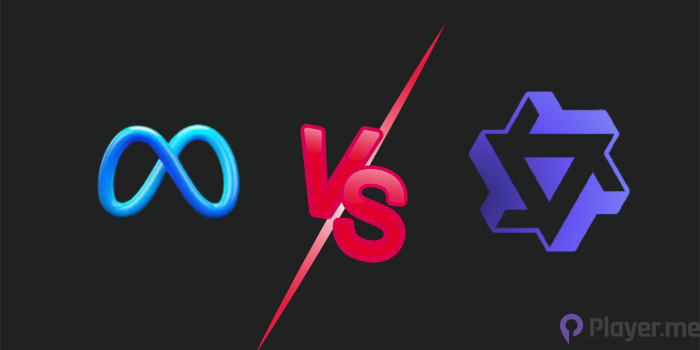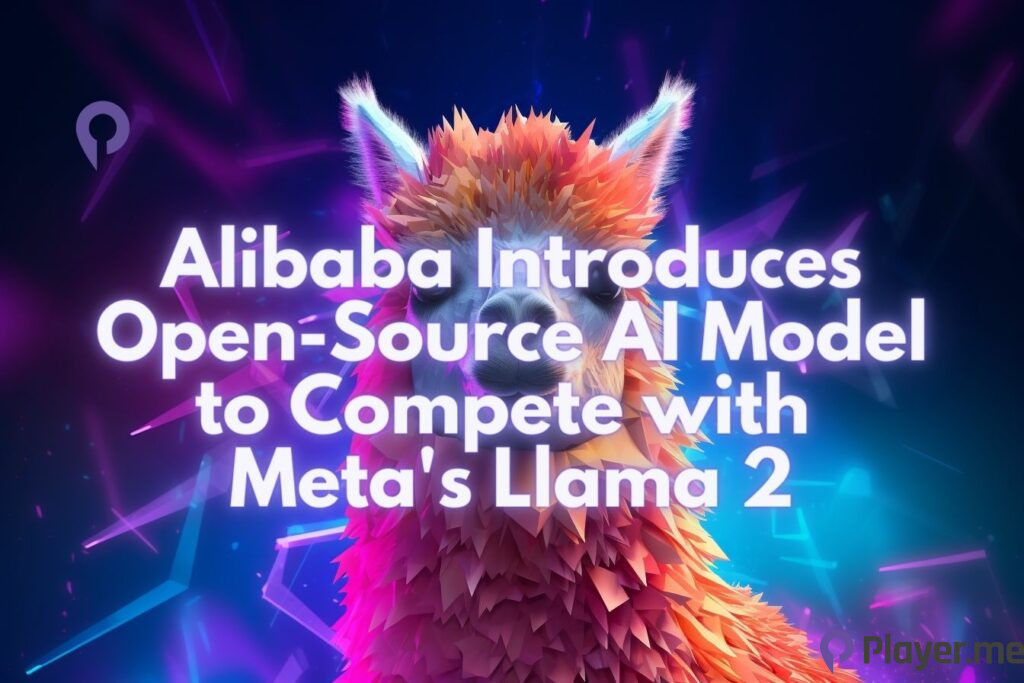The world of Artificial Intelligence (AI) is witnessing a revolution, with major tech companies like Alibaba and Meta leading the charge. The introduction of open-source AI models democratises access to cutting-edge technology, fosters innovation, and reshapes industries.
Alibaba Cloud, the digital technology and intelligence backbone of Alibaba Group, has rolled out two open-sourced AI models, Qwen-7B and Qwen-7B-Chat, to compete with Meta’s open-sourced model Llama 2. This strategic move aims to make AI technologies accessible to academics, researchers, and commercial institutions worldwide, challenging the current market dominance enjoyed by OpenAI and Google.
Also Read: Demystifying Machine Learning: A Beginner’s Guide to Understanding ML Algorithms
Alibaba’s AI Models: Qwen-7B and Qwen-7B-Chat

The Qwen-7B model is pre-trained on over two trillion tokens, including Chinese, English, and other multilingual materials, code, and mathematics. It covers general and professional fields, with a context length reaching 8K. This model has distinguished itself in the Massive Multitask Language Understanding (MMLU) benchmark, scoring 56.7 out of 100. To read more about MMLU, visit here.
Qwen-7B-Chat is aligned with human instructions and can be deployed on cloud and on-premises infrastructures. This flexibility enables users to fine-tune the models and build their high-quality generative models effectively and cost-efficiently.
Democratising AI: Free Access and Licensing
To democratise AI technologies, Alibaba has made the code, model weights, and documentation of the two new models freely accessible. For commercial uses, the models will be free to use for companies with fewer than 100 million monthly active users.
Licensing for Larger Programs

Programs with more users can request a licence from Alibaba Cloud. This approach ensures that the models are accessible to a wide range of users while maintaining control and compliance with licensing requirements. Similarly, Meta’s Llama 2 also requires a licence from users with more than 700 million users.
Performance and Capabilities

The pre-trained Qwen-7B model has outperformed other major pre-trained open-source models in various benchmarks. It achieved the highest score among models with equivalent parameters in the leaderboard of C-Eval, a comprehensive Chinese evaluation suite for foundational models.
The new model’s capabilities encompass fields such as elementary mathematics, computer science, and law. Its versatility and skills make it a valuable tool for various applications, from academic research to commercial development.
Alibaba’s Vision and Commitment
Alibaba’s CTO, Jingren Zhou, emphasised the company’s aim to promote inclusive technologies and enable more developers and SMEs to reap the benefits of generative AI. This open approach is expected to bring collective wisdom to help further open-source communities thrive.
Alibaba’s commitment to open-source initiatives reflects its long-term vision and determination to lead in AI. By open-sourcing proprietary Large Language Models (LLMs), Alibaba fosters collaboration and innovation in the AI community.
Comparison with Meta’s Llama 2

Meta’s Llama 2 was trained on 40% more data than Llama 1 and has double the context length than Llama 1. Its fine-tuned models have been trained on over 1 million human annotations. Llama 2 outperforms other open-source language models on many external benchmarks, including reasoning, coding, proficiency, and knowledge tests.
The introduction of Alibaba’s open-sourced models comes after Meta released Llama 2. This competitive landscape signifies a race for supremacy in the AI field, with major players like Alibaba and Meta pushing the boundaries of technology.
Read More: Anthropic Launches ChatGPT Competitor: Meet Claude 2!
Alibaba’s Collaboration with Meta
Supporting Meta’s AI Model Llama
Alibaba has become the first Chinese enterprise to support Meta’s open-source AI model Llama 2, enabling Chinese business users to make programs off the LLM. This collaboration with Meta could help Alibaba bolster its AI plans by keeping track of the latest developments in the technology.
Training and Deployment Solution for Llama 2
Today, Alibaba Cloud has launched the first training and deployment solution for the entire Llama 2 series in China, welcoming all developers to create customised large models on Alibaba Cloud, Alibaba Cloud said on its WeChat account. This move could further strengthen Alibaba’s position in the AI landscape.
Alibaba’s Strategic Move Into AI — 3 Innovations
#1. Alibaba’s LLM: Tongyi Qianwen
In April, Alibaba launched its LLM called Tongyi Qianwen, an AI model trained on vast amounts of data. This model allows AI content generation in English and Chinese and has different model sizes, including seven billion parameters and above. A model’s parameters refer to its power. The more parameters, the more complex and capable the model is.
#2. Open-Sourcing Qwen-7B and Qwen-7B-Chat
Alibaba is open-sourcing the seven-billion-parameter model called Qwen-7B, along with a version designed for conversational apps called Qwen-7B-Chat. This means that researchers, academics, and companies globally can use the model to create their generative AI apps without needing to train their systems, saving time and expense. Companies with over 100 million monthly active users will require a royalty-free licence from Alibaba to do so.
#3. Boosting Cloud Computing Through AI
This comes at a time when China’s biggest e-commerce company is looking to boost its cloud computing division through investments in AI. Alibaba is targeting cloud computing as a critical future area for profitability and growth. The distribution of its AI model will help the company get more users for its AI model.
China’s AI Ambitions

China has been trying to catch up to the U.S. in the field of AI. Beijing encourages Chinese companies to quickly develop homegrown and “Controllable” AI models that can rival those developed by U.S. companies.
Besides Alibaba, tech giants such as Tencent Holdings and Huawei have recently been aggressively developing their AI models. This concerted effort reflects China’s determination to become a global leader in AI technology. You can also visit https://player.me/category/ai/ to learn about AI and its revolutionary use cases.
Frequently Asked Questions
What Are Alibaba’s New AI Models, Qwen-7B and Qwen-7B-Chat, and How Do They Compare to Meta’s Llama 2?
Alibaba’s Qwen-7B and Qwen-7B-Chat are open-sourced AI models designed for various applications, including content generation and conversational apps. Qwen-7B is pre-trained on over two trillion tokens, and Qwen-7B-Chat is designed for conversational use. They are part of Alibaba’s effort to democratise AI and compete with Meta’s Llama 2, an open-sourced LLM. While both companies aim to make AI accessible, the specific features and licensing terms may vary.
Why Is Alibaba Open-Sourcing Its AI Models, and What Does It Mean for Developers and Businesses?
Alibaba is open-sourcing its AI models to increase the use of its product and take a leading role in technology. By making the models freely accessible, researchers, academics, and companies can create their generative AI apps without needing to train their systems, saving time and expense. It also allows Alibaba to challenge other tech giants like Meta and OpenAI in AI.
How Can Businesses Use Alibaba’s Open-Sourced AI Models, and Are There Any Licensing Requirements?
Businesses can use Alibaba’s open-sourced AI models to create generative AI apps and other AI-driven solutions. Companies with fewer than 100 million monthly active users can use the models for free, while those with more will require a royalty-free licence from Alibaba. This approach ensures accessibility while maintaining control and compliance.





